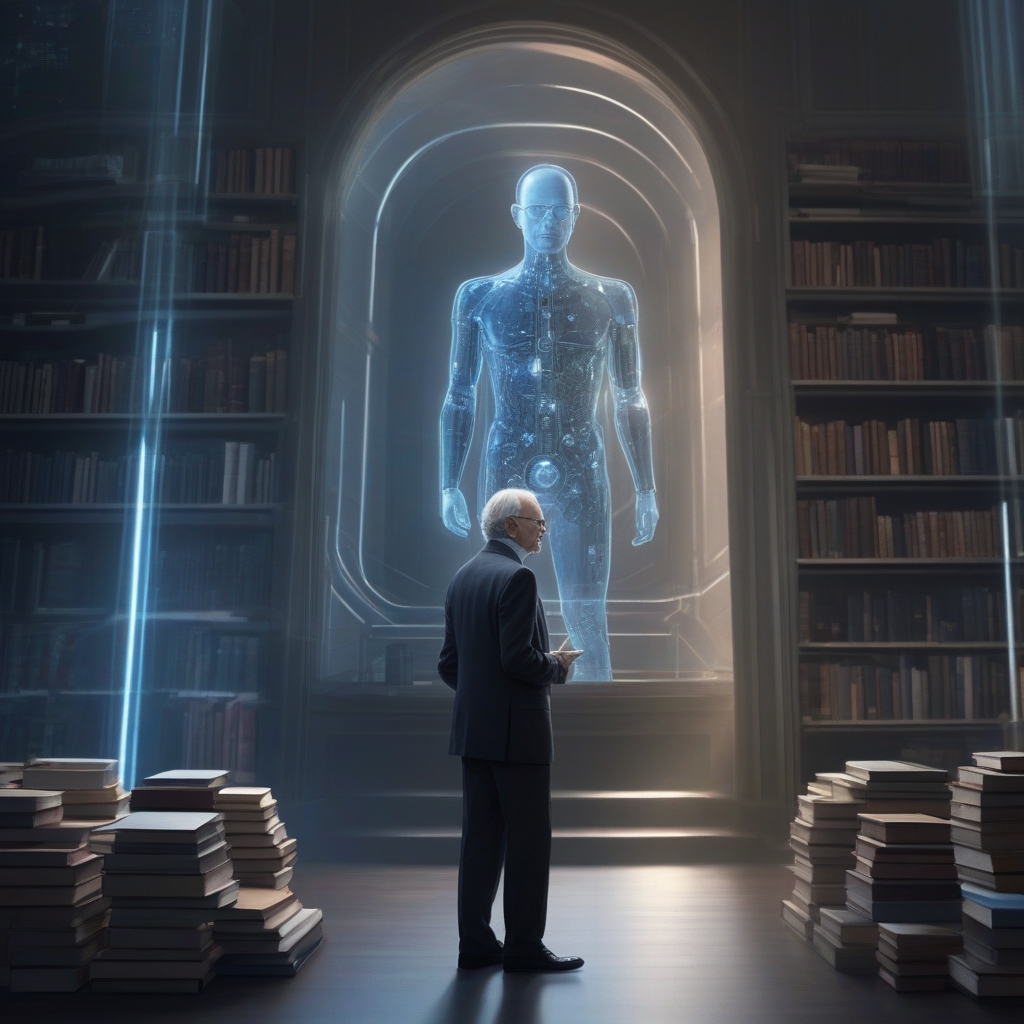## The Dual-Edged Sword of AI: A Nobel Laureate’s Perspective
In an era defined by breathtaking technological advancements, the integration of artificial intelligence (AI) into our daily lives continues to accelerate at an unparalleled pace. However, this progress is not without its pitfalls. Recently, a distinguished Nobel laureate has stepped forward, raising important concerns about the potential risks associated with AI. As we stand on the precipice of an AI-driven future, his warnings serve as a critical reminder of the balance between innovation and careful stewardship.
### The Potential of AI: Unleashing Creativity and Efficiency
AI holds monumental promise, with applications that have transformed sectors from healthcare to finance. Here are some of the profound benefits being realized today:
- Healthcare: AI-driven diagnostics and personalized treatment plans have revolutionized patient care, improving outcomes and expanding access.
- Finance: Algorithms enable predictive analytics and fraud detection, enhancing security and efficiency.
- Transportation: Autonomous vehicles are reshaping the way we think about mobility and logistics.
These advancements underscore the transformative power of AI — but they come with significant challenges.
### The Warning Signs: A Call for Responsibility
The laureate’s critique does not diminish the potential of AI but instead highlights several areas demanding caution:
- Ethical Concerns: As AI systems grow more autonomous, the lack of ethical guidelines becomes starkly apparent. There is a pressing need for frameworks that ensure AI operates within moral boundaries.
- Job Displacement: Automation could potentially disrupt labor markets, with AI-capable systems taking over jobs traditionally held by humans, leading to significant economic upheavals.
- Privacy Risks: AI’s capability to process vast quantities of data raises concerns about individual privacy infringement and data security.
- Bias and Inequality: AI systems, if not carefully designed, can inherit and propagate societal biases, exacerbating existing inequalities.
### The Responsibility of Innovators and Regulators
To harness the full potential of AI while mitigating its risks, it’s essential that innovators, regulators, and society at large collaborate. This involves:
#### Developing Robust Ethical Standards
Regulations must evolve to accommodate the rapid expansion of AI technologies. Ethical guidelines — established collaboratively by governments, tech companies, and civil society — can help navigate the complexity of AI applications, ensuring they align with human values.
#### Enhancing Education and Workforce Training
Preparing the workforce for the future of AI entails upskilling initiatives to help individuals adapt to new job roles. This includes:
- Education Reforms: Adjusting curricula to include AI literacy and technical skills.
- Training Programs: Offering retraining opportunities for those affected by automation.
#### Building Transparent Algorithms
Transparency in AI systems is paramount. This means creating algorithms that are not black boxes but rather designs that can be examined, tested, and understood. The key is **accountability**, ensuring AI models can be audited and adjusted as necessary.
#### Fostering Global Cooperation
International collaboration is crucial to establish best practices and regulations that transcend national borders. Collaborative frameworks can ensure equitable AI advancements, preventing technology from being used to deepen divides between nations or communities.
### The Role of Nobel Laureates and Thought Leaders
The Nobel laureate’s cautionary remarks are part of a broader dialogue involving thought leaders across various disciplines. Their insights highlight the profound impact these innovations can have on society, emphasizing the weight of responsibility that accompanies such advancements.
Their calls to action are not only directed at policymakers and developers but also at all stakeholders, including:
- Academia: Should prioritize interdisciplinary research to address complex AI challenges.
- Industry: Businesses can leverage innovation responsibly, ensuring technological solutions are designed inclusively.
- Public: Individuals must stay informed about AI’s implications and engage in public discourse to shape its future.
### Pioneering a Balanced Future
As we venture further into this digital age, the messages conveyed by leaders and experts underline a fundamental truth — that technology is a tool and, like any tool, it is neither inherently good nor evil. What ultimately matters is how it is wielded.
The laureate’s perspective, set against the backdrop of a study filled with both historical achievements and cutting-edge technology, serves as a visual metaphor for our times. It highlights both the awe-inspiring potential and the inherent dangers of AI, urging us to adopt a conscientious approach to technological integration.
In summary, the warnings from esteemed Nobel laureates remind us of our collective responsibility. By prioritizing ethical considerations and a shared vision of progress, we can *harness* the full potential of AI, ensuring it serves as a catalyst for positive change rather than an unintended liability.

Leave a Reply